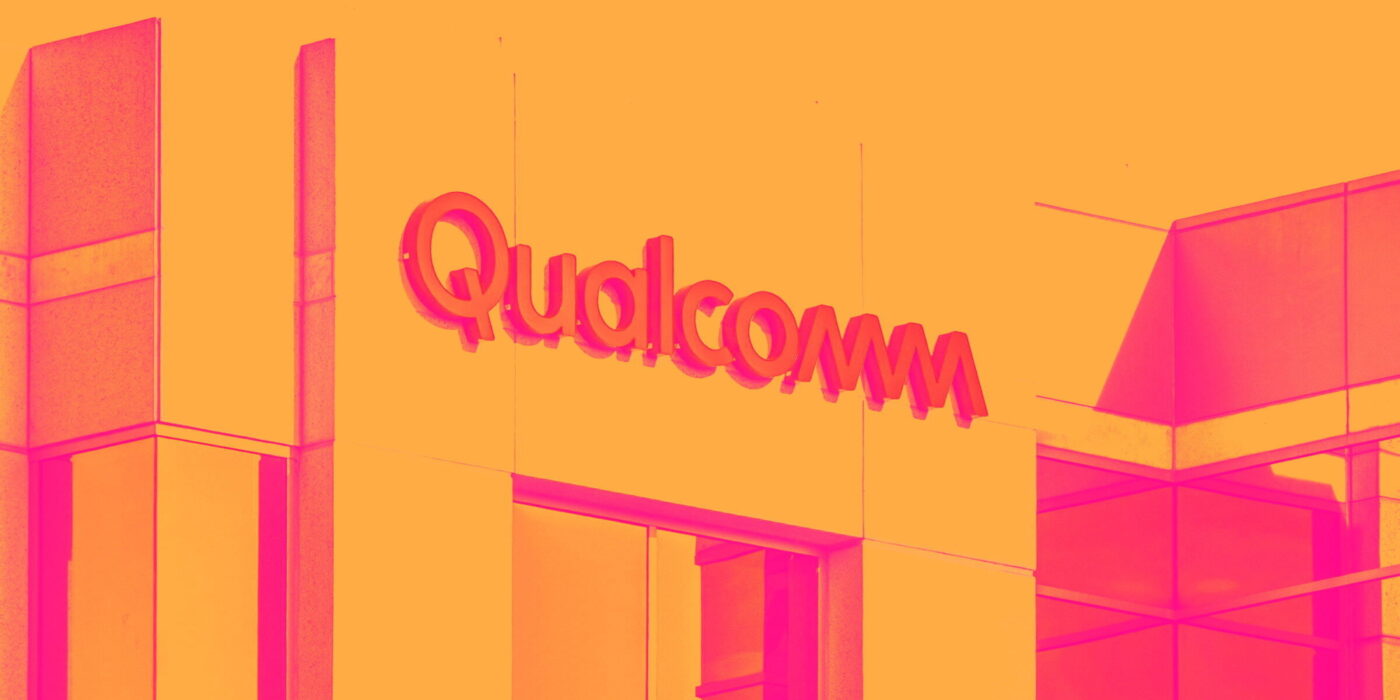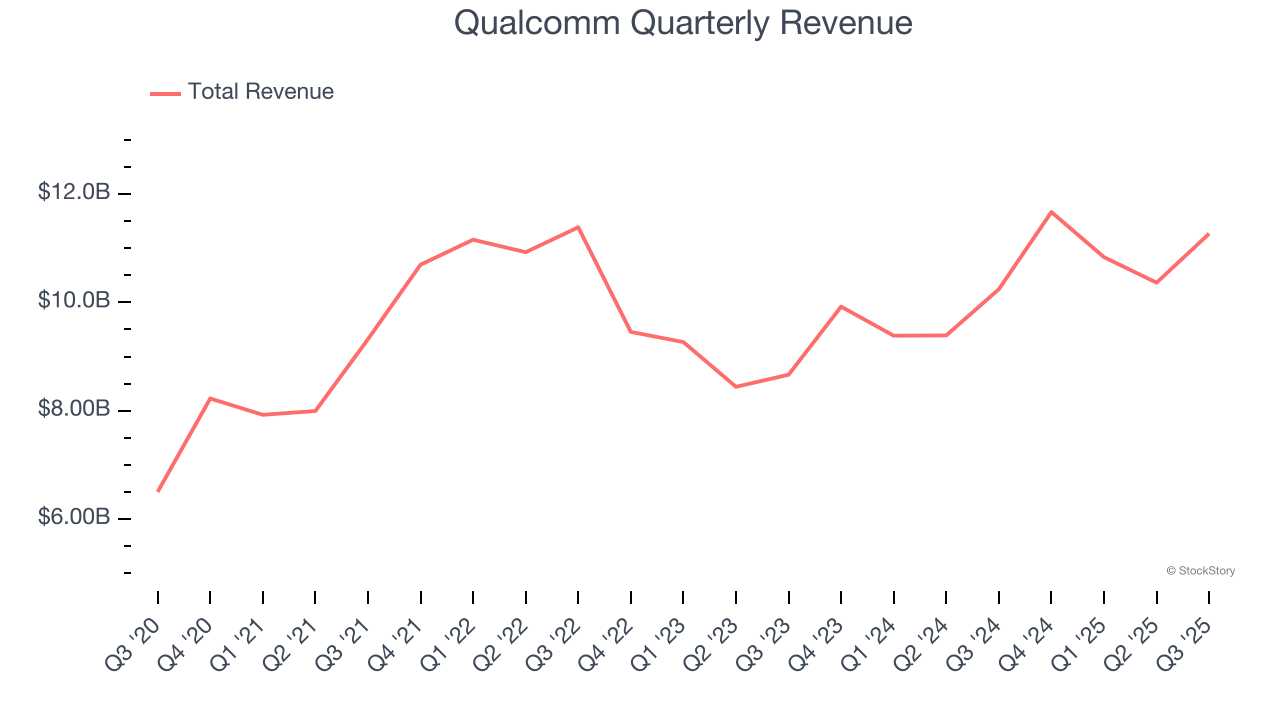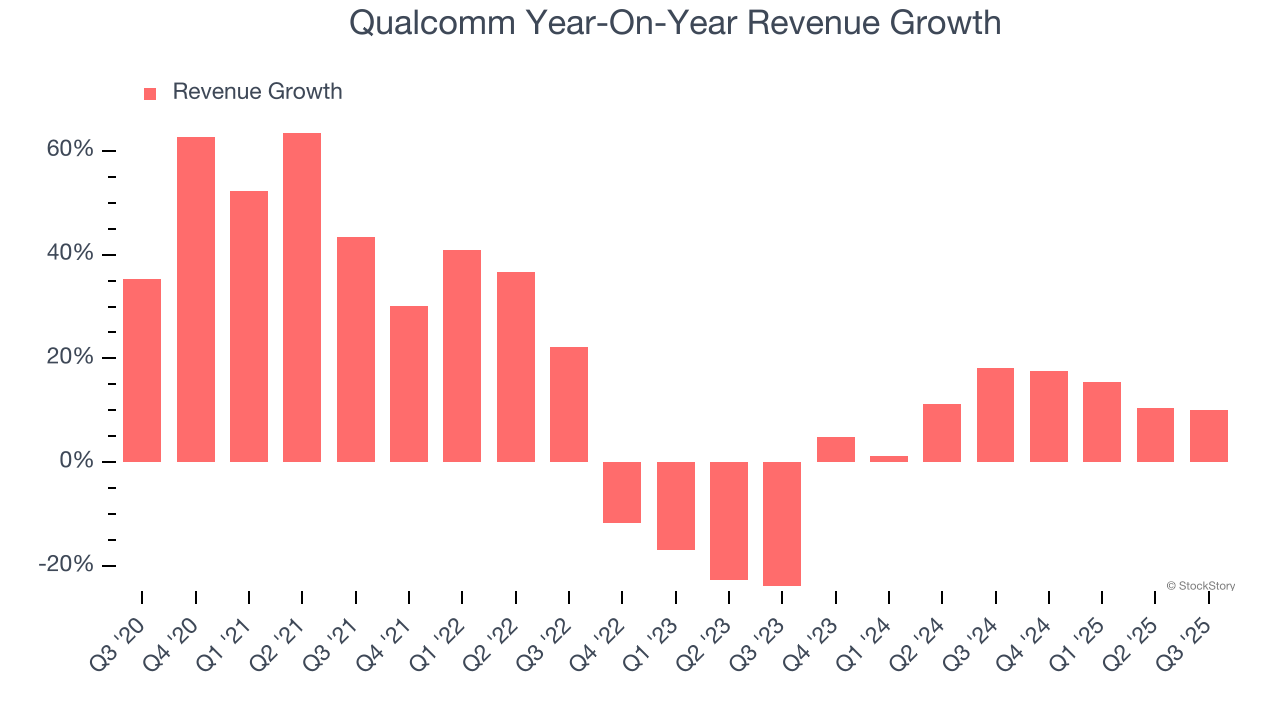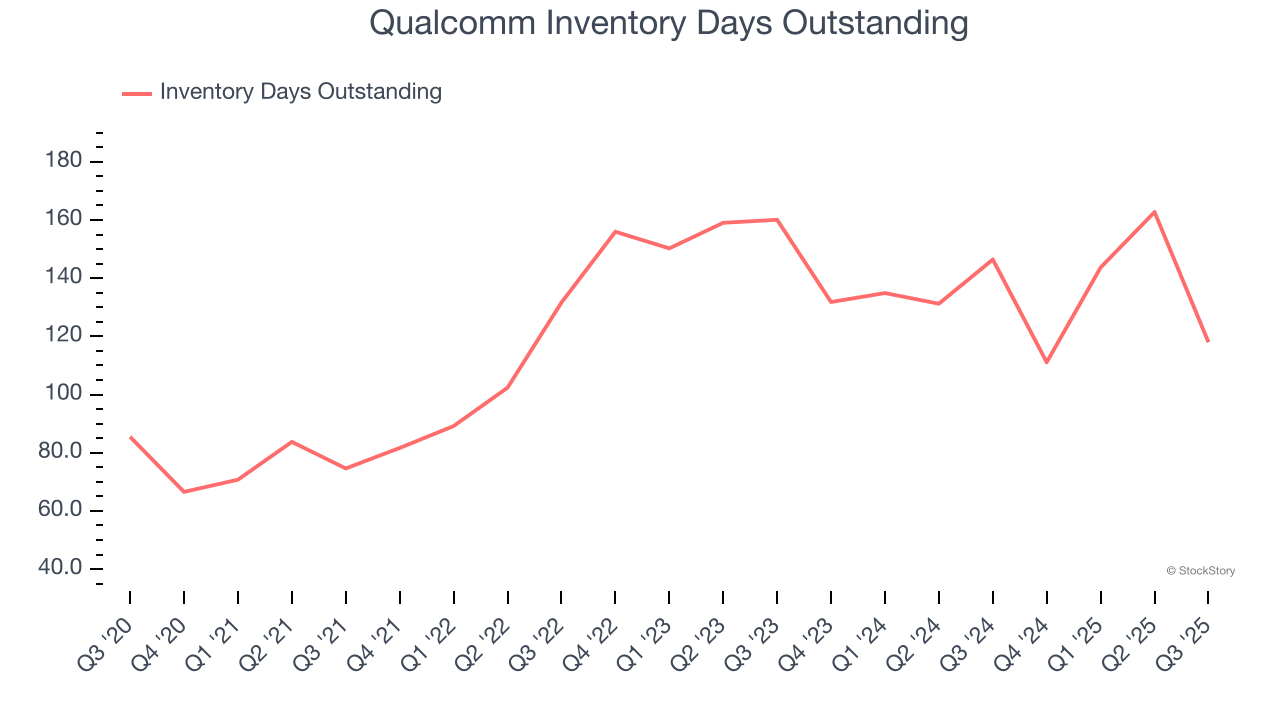
Wireless chipmaker Qualcomm (NASDAQ:QCOM) reported Q3 CY2025 results beating Wall Street’s revenue expectations, with sales up 10% year on year to $11.27 billion. On top of that, next quarter’s revenue guidance ($12.2 billion at the midpoint) was surprisingly good and 5.5% above what analysts were expecting. Its non-GAAP profit of $3 per share was 4.4% above analysts’ consensus estimates.
Is now the time to buy Qualcomm? Find out by accessing our full research report, it’s free for active Edge members.
Qualcomm (QCOM) Q3 CY2025 Highlights:
- Revenue: $11.27 billion vs analyst estimates of $10.77 billion (10% year-on-year growth, 4.6% beat)
- Adjusted EPS: $3 vs analyst estimates of $2.87 (4.4% beat)
- Adjusted Operating Income: $3.81 billion vs analyst estimates of $3.64 billion (33.8% margin, 4.6% beat)
- Revenue Guidance for Q4 CY2025 is $12.2 billion at the midpoint, above analyst estimates of $11.57 billion
- Adjusted EPS guidance for Q4 CY2025 is $3.40 at the midpoint, above analyst estimates of $3.30
- Operating Margin: 25.9%, in line with the same quarter last year
- Free Cash Flow was -$10.41 billion, down from $2.39 billion in the same quarter last year
- Inventory Days Outstanding: 118, down from 163 in the previous quarter
- Market Capitalization: $185.1 billion
Company Overview
Having been at the forefront of developing the standards for cellular connectivity for over four decades, Qualcomm (NASDAQ:QCOM) is a leading innovator and a fabless manufacturer of wireless technology chips used in smartphones, autos and internet of things appliances.
Revenue Growth
Examining a company’s long-term performance can provide clues about its quality. Any business can experience short-term success, but top-performing ones enjoy sustained growth for years. Luckily, Qualcomm’s sales grew at an excellent 15.3% compounded annual growth rate over the last five years. Its growth beat the average semiconductor company and shows its offerings resonate with customers, a helpful starting point for our analysis. Semiconductors are a cyclical industry, and long-term investors should be prepared for periods of high growth followed by periods of revenue contractions.

Long-term growth is the most important, but short-term results matter for semiconductors because the rapid pace of technological innovation (Moore's Law) could make yesterday's hit product obsolete today. Qualcomm’s annualized revenue growth of 11% over the last two years is below its five-year trend, but we still think the results suggest healthy demand. 
This quarter, Qualcomm reported year-on-year revenue growth of 10%, and its $11.27 billion of revenue exceeded Wall Street’s estimates by 4.6%. Beyond the beat, this marks 8 straight quarters of growth, showing that the current upcycle has had a good run - a typical upcycle usually lasts 8-10 quarters. Company management is currently guiding for a 4.6% year-on-year increase in sales next quarter.
Looking further ahead, sell-side analysts expect revenue to remain flat over the next 12 months, a deceleration versus the last two years. This projection is underwhelming and indicates its products and services will see some demand headwinds. At least the company is tracking well in other measures of financial health.
Software is eating the world and there is virtually no industry left that has been untouched by it. That drives increasing demand for tools helping software developers do their jobs, whether it be monitoring critical cloud infrastructure, integrating audio and video functionality, or ensuring smooth content streaming. Click here to access a free report on our 3 favorite stocks to play this generational megatrend.
Product Demand & Outstanding Inventory
Days Inventory Outstanding (DIO) is an important metric for chipmakers, as it reflects a business’ capital intensity and the cyclical nature of semiconductor supply and demand. In a tight supply environment, inventories tend to be stable, allowing chipmakers to exert pricing power. Steadily increasing DIO can be a warning sign that demand is weak, and if inventories continue to rise, the company may have to downsize production.
This quarter, Qualcomm’s DIO came in at 118, which is 2 days below its five-year average. At the moment, these numbers show no indication of an excessive inventory buildup.

Key Takeaways from Qualcomm’s Q3 Results
We were impressed by Qualcomm’s strong improvement in inventory levels. We were also glad its revenue guidance for next quarter exceeded Wall Street’s estimates. Zooming out, we think this was a good print with some key areas of upside. The market seemed to be hoping for more, and the stock traded down 1.5% to $176.40 immediately following the results.
So should you invest in Qualcomm right now? If you’re making that decision, you should consider the bigger picture of valuation, business qualities, as well as the latest earnings. We cover that in our actionable full research report which you can read here, it’s free for active Edge members.
